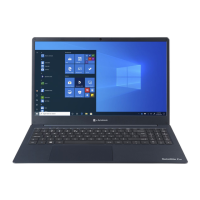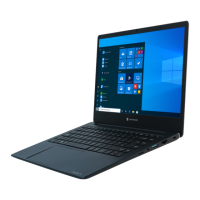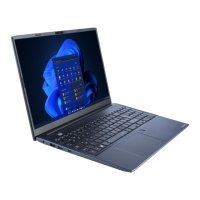SSD is a large-capacity storage device which uses Solid-State
Memory in place of a magnetic disk of the hard disk.
Under certain unusual conditions of prolonged non-use and/or exposure to
high temperatures, the HDD/SSD might be vulnerable to data retention
errors.
Legal Footnote (Internal Storage Drive Capacity)
For more information regarding Internal Storage Drive Capacity, refer to the
Legal Footnotes section.
RTC battery The internal RTC battery backs up the Real-Time
Clock (RTC) and calendar.
Video RAM The memory in the graphics adaptor of the
computer, used to store the image displayed on a
bitmap display.
The amount of Video RAM available depends on
the system memory of the computer.
Graphics Processing
Unit
Graphics Processing Unit (GPU) performance
might vary depending on product model, design
configuration, applications, power management
settings and features utilized. GPU performance
is only optimized when operating in AC power
mode and might decrease considerably when
operating in battery power mode.
Legal Footnote (Graphics Processing Unit (GPU))
For more information regarding Graphics Processing Unit (GPU), refer to
the Legal Footnotes section.
NVIDIA Graphic Control
Some NVIDIA graphics models might include NVIDIA
®
Optimus™
technology feature.
NVIDIA
®
Optimus™ technology intelligently optimizes notebook
performance by seamlessly switching between a discrete NVIDIA GPU for
great graphics performance and an Intel
®
integrated graphics chip for
sustained battery life. Switching is automatic and does not require the user
to reboot the computer.
In the Manage 3D Settings menu of NVIDIA Control Panel, you can change
the global 3D settings and create overrides for specific programs. The
overrides will be used automatically each time the specified programs are
launched.
User's Manual
3-14

